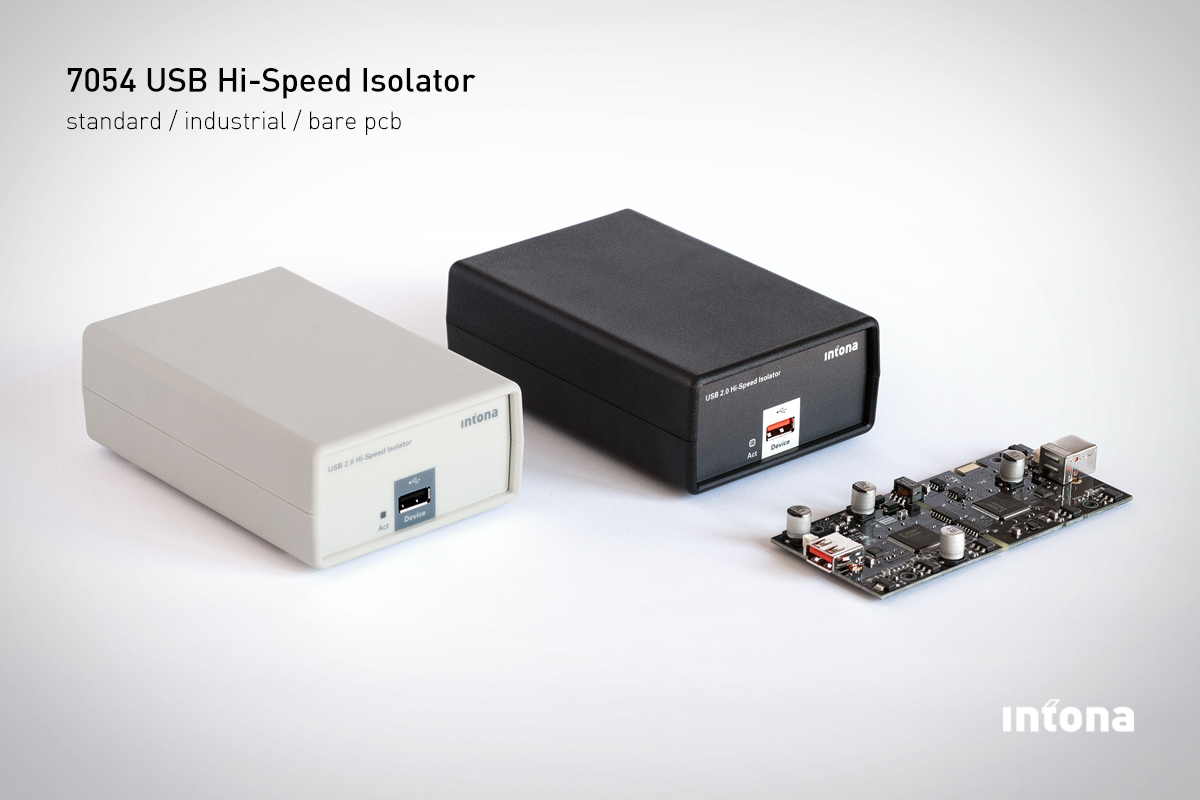Hi everyone,
Thanks for all the input here, especially the computer audio and source components sections, I have been following things for a couple years now and Head-fi has been the a most beneficial source of information, even though I do not have any high-end headphones and use speakers exclusively for music. I think I can add some input to this thread so here goes....
A few days ago I changed an Uptone Regen (powered by Teradak 9V fed by Audio-GD HE-350 regenerator) with the standard Intona USB Isolator.
Now have a few days listening with the Intona in the chain..
Mine was quickly and professionally shipped and arrived in a few days via UPS (to China).
The most noticeable improvement from the Intona is the top end, cymbals especially are more natural sounding. (I have worked in bands and done a little recording) Generally from the lower midrange up, everything is MUCH clearer - with many details (sometimes entire elements) present that went unnoticed previously, for example Joni Mitchell, "Court and Spark", "Peoples Parties", it is now possible to immediately understand each lyric with her phrasing and pacing - and thus better to naturally follow her story line, you feel more like you are there with her.. Also - previously the beginning passages on Genesis "Duke", the cymbal play was mostly a wash of various intensity and tones, but my system could not resolve the sounds into individual cymbal play... with the Intona now it is possible to identify the various cymbals, positions and stick work.
Generally, since I installed the Intona, on every album there have been at least a few places where I can now more easily understand the lyrics. I was listening to David Bowie, "Diamond Dogs" and the improvement was such that seemed the files had been remastered exactly to my liking.
Bass is a little tighter with the Intona, but not deeper. Dynamics are similar between the 2 devices.
Soundstage height/width/depth initially seemed pretty much the same - but after some evaluation with more spacious recordings, I noticed the soundstage actually deepened around 100% to the rear, and 10% to the front and sides, height stayed pretty much the same. Also pertaining to soundstage is the added detail which focuses the elements positions within the soundstage and also adds elements that I have not noticed previously. For soundstage depth example, if you try the first song on Alan Parsons Project "I Robot", previously the choir parts stopped at my front wall (about 1 meter from the rear of the speakers), these same parts now have the effect of being back from the speakers up to 3 meters (minimum) with the elements and their movements very clearly defined.
I was testing a rather good tube buffer previously, as I like the comforting feeling that a good clean tube stage offers... After adding the Intona I decided to power the PPA card with the battery PS (and thus I guess the Intona) in an effort to soften things up a bit.... I have since taken the tube stuff out of the system.. the Intona cleans up everything so well that any tube smoothing is not required and still retains all the SS detail.
In my install with the Intona, I noticed that I now need to start the computer first, let it settle, then start the Tanley DDC for JPlay to see the Tanly KS... I cannot start the Tanley before the computer.. JPlay will not see the DDC. (With the Regen I did not have this procedural restriction). Also I first tried the Intona with the Regen-supplied USB adapter... things sounded OK, but overall the frequency balance was tipped to the upper end when using this hard adapter.. I replaced the adapter with my prior-used PPA short cable and now the top end is more relaxed and overall balanced.
Note, I was really really happy with the Regen improvements, it was really an eye-opener as to what is possible in this area.... but as of now it seems like there is nothing between the computer USB port and the DAC. Everything sounds really good with just the Intona. Adding this device into my system was for sure my most cost effective tweak, and subjectively similar or better than upgrading DDC's, adding battery power to the OS drive, or adding the power regeneration machine.
This is the first time in a long while I am entering the stereo room to listen to music - rather than to evaluate the status of the system SQ.
I guess soon there will be other devices similar, hopefully somewhat cheaper... but I think Intona did a good job with this device - and in my system the benefits were far greater than I would have expected with this level of investment.
Here is the current chain from computer to DAC...
Gigabyte GA-Z87M-D3H, I5-4670t, NOFAN CR-95c, 2x4 GB Corsair, TeraDak 210 ATX LPS, PPA V2 USB card (battery), 32GB OS SSD (battery), PS/2 mouse, USB keyboard, on-board video (monitor is powered off during play), 256GB SSD(LPS) for primary music (all WAV files), SSD's use PPA red thin SATA cables and suspension blocks. WIN2012 and AO, JPlay6, Mini, Total Commander. Ultrastream/Hibernate, PPA dual USB cable, Intona standard USB isolator, PPA Regen-size USB cable, Tanly DDC via HDMI (Wireworld Starlight 5.2, 0.3M) i2S to Audio-GD Master 7 DAC.
























 this soic8 on the dirty side of the intona directly avid the fpga. Adesto1512 45db021e sshn .
this soic8 on the dirty side of the intona directly avid the fpga. Adesto1512 45db021e sshn .